Home | Tours | Trip Reports | News | Team | Calendar | Links | Contact | Store | Mailing List
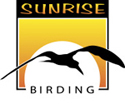
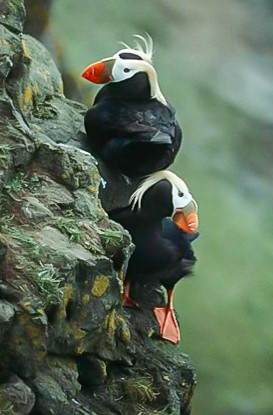 OREGON
OREGONBirding the Pacific to the Peaks!
May 29 - June 9, 2026
With Frank Gallo & Jay Withgott
Contact [email protected] to reserve your space!
Trip Cost> Registration Form> Download Itinerary (pdf)>
Tour Registration, Terms, Cancellation Policies>
With a wealth of scenic beauty and the fifth-highest bird list of any U.S. state, Oregon makes for an exciting birding destination. One could spend a lifetime here and never run out of fascinating places to visit and natural spectacles to behold. Spanning a diverse mix of biogeographic regions, Oregon is blessed with a variety of remarkably different habitats.
Our tour begins along the coast, where nutrient-rich cold-water currents of the Pacific Ocean nurture a productive marine food chain that supports an abundance of seabirds. Craggy headlands, immense sea stacks, and rocky tide pools alternate with sandy beaches, mudflats, and estuaries as we follow the coast, south. Then, after crossing the conifer-dominated forests of the Coast Range, we'll descend through oak woodlands and drop into the Willamette River Valley, its farms nourished by the lush soils that lured settlers in the 19th century. Climbing through maple forests up into the Cascades, we'll encounter a sampling of high-elevation forest species before entering Oregon's high desert at the northwestern edge of the Great Basin. (Photo: Tufted Puffins)
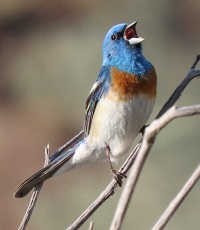 Oregon has much to offer birders at any time of year, but in late spring breeding is in full swing, birds are vocal and active, and the high desert of eastern Oregon is at its most vibrant and beautiful. Vast sagebrush plains interlaced with riparian corridors and wetland oases make for a fascinating landscape full of birds typical of the American West. We will aim to get the most out of our time here with stays at two wonderful remote and rustic lodges perfectly situated in prime birding areas. (Photo: Lazuli Bunting)
Oregon has much to offer birders at any time of year, but in late spring breeding is in full swing, birds are vocal and active, and the high desert of eastern Oregon is at its most vibrant and beautiful. Vast sagebrush plains interlaced with riparian corridors and wetland oases make for a fascinating landscape full of birds typical of the American West. We will aim to get the most out of our time here with stays at two wonderful remote and rustic lodges perfectly situated in prime birding areas. (Photo: Lazuli Bunting)
Following this high desert immersion experience during the splendor of spring, it’s back to the ponderosa pine zone of the Cascades to enjoy a delightful bird community in beautiful surroundings. On our final day we'll see scenic river gorges, the state's highest mountain peak, the mighty Columbia River, and Oregon's tallest waterfall. As we savor the bird diversity of these diverse locations, we will also be keeping an eye on the vast assortment of butterflies, dragonflies, reptiles, amphibians, mammals, marine invertebrates, and flowers that we will encounter on this exciting loop tour through Oregon. (Photo below: White-headed Woodpecker)
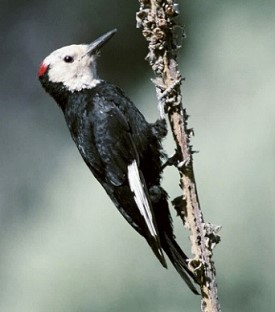 Some highlights & targets of this fantastic tour:
Some highlights & targets of this fantastic tour:
-
11 species of Woodpecker, including White-headed, Lewis's, and Black-backed Woodpecker
-
Up to seven species of owl, including Northern Pygmy Owl Barn, Flammulated, and Western Screech
-
Sooty Grouse, Chukar, Mountain, and California Quail
-
Nesting Barrow's Goldeneye, Harlequin Duck
-
Western shorebirds such as Surfbird, Black Oystercatcher, Black Turnstone, and Wandering Tattler
-
Sagebrush species such as Sage Thrasher and Sagebrush Sparrow
-
Western songbird specialties such as the unique Wrentit, Lazuli Bunting, Pacific Wren, Tricolored Blackbird, Mountain Bluebird, Pinyon Jay, Clarke's Nutcracker, and Chestnut-backed Chickadee.
Combine this with Oregon's spectacular scenery, majestic mountains,
picturesque waterfalls, and old growth forests, and you have
an adventure you'll always remember...
We hope you can join us!
Trip Cost & Travel Planning> Registration Form> Tour Registration, Terms, Cancellation Policies>

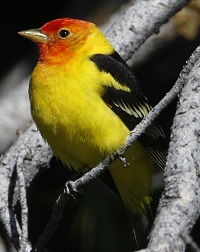 ITINERARY
ITINERARY
Day 1: Arrive in Portland, Oregon (PDX).
Plan to meet at 6:00 p.m. in our hotel lobby for a welcome dinner.
Day 2: Portland to the coast
On our first birding day we will travel from our Portland hotel to the coast. On the way, we'll make stops to sample species from the Willamette Valley and the Coastal Range, including targets like Acorn Woodpecker, Sooty Grouse, and American Dipper along with the first of many expected species such as Brewer’s Blackbird, Western Tanager, Steller's Jay, Lesser Goldfinch, and Band-tailed Pigeon.
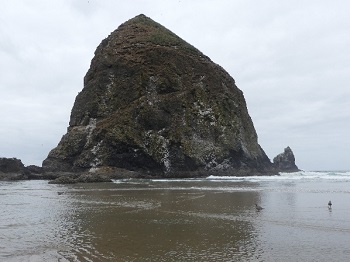 Our tour of the Oregon coast takes us to one of its most iconic calendar-shot locations, Haystack Rock at Cannon Beach, where we hope to see Tufted Puffins flying to and from their nesting burrows high atop this scenic sea stack. We'll explore the area for coastal species such as Black Oystercatcher and Harlequin Duck, amid swarms of Common Murres and three species of cormorants, and we'll also get a small taste of old growth Sitka spruce forest. Heading south down the coast, we'll end the day in Tillamook where, if time and interest allow, we'll peek into the famed Tillamook Creamery for a quick tour of their cheese-making operations and a taste of their ice cream. Night in Tillamook.
Our tour of the Oregon coast takes us to one of its most iconic calendar-shot locations, Haystack Rock at Cannon Beach, where we hope to see Tufted Puffins flying to and from their nesting burrows high atop this scenic sea stack. We'll explore the area for coastal species such as Black Oystercatcher and Harlequin Duck, amid swarms of Common Murres and three species of cormorants, and we'll also get a small taste of old growth Sitka spruce forest. Heading south down the coast, we'll end the day in Tillamook where, if time and interest allow, we'll peek into the famed Tillamook Creamery for a quick tour of their cheese-making operations and a taste of their ice cream. Night in Tillamook.
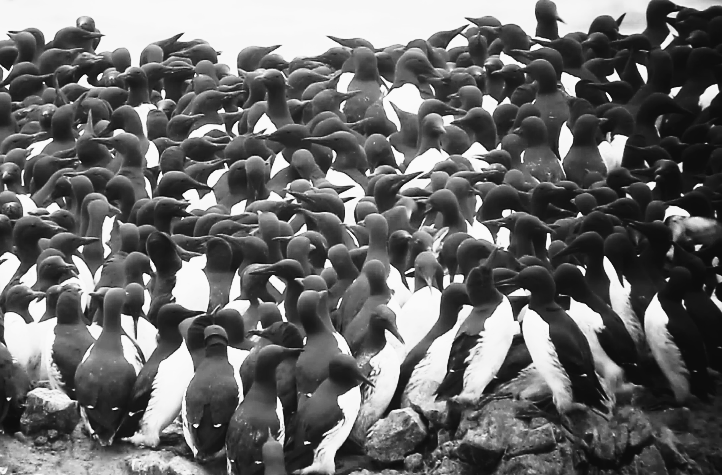
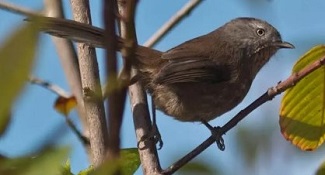 Day 3: Following the coast south
Day 3: Following the coast south
After skirting the edge of Tillamook Bay looking for lingering shorebirds, we'll take in the gorgeous ocean views from atop the forested headland of Cape Meares, before proceeding to Three Arch Rocks. Theodore Roosevelt made these sea stacks into our first national wildlife refuge west of the Mississippi, and they still host seabird colonies today.
Continuing south along the coast, we’ll stop for local specialties such as Wrentit, Pacific Wren, Hermit Warbler, and Chestnut-backed Chickadee and for coastal species including Surf Scoter, Pacific Loon, Brown Pelican, Pigeon Guillemot, Wandering Tattler, Whimbrel, Rhinoceros Auklet, and Marbled Murrelet. Night near Otter Rock.
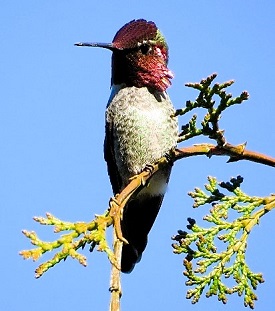 Day 4: From the ocean to the valley
Day 4: From the ocean to the valley
We'll begin the morning at Boiler Bay, the best spot on the Oregon coast for sea watching, scoping a parade of coastal and pelagic birds as they make their morning commute over the waves. Then we'll visit Yaquina Head and its lighthouse for another sea-watch on a rocky peninsula and for closer views of nesting murres and cormorants. Views of gray whales, sea lions, and harbor seals are possible from this stretch of the coast, and a rich community of marine invertebrates will be visible at the lowest tide. Midday will be birding the bay, estuary, and jetties at Yaquina Bay in Newport.
In the afternoon we'll bid adieu to the coast and ascend over the Coast Range and into the Willamette River Valley. En route at Finley National Wildlife Refuge we hope to pick up a mix of species such as Anna's and Rufous Hummingbirds, Vaux's Swift, Hutton's Vireo, Western Flycatcher, Western Wood-Pewee, Bushtit, MacGillivray's Warbler, Black-headed Grosbeak, and Lazuli Bunting. We'll end the day with an evening stroll through marshes, ponds, and oak woodlands at Fern Ridge Reservoir near Eugene. Night in Eugene.
Day 5: Over the Cascades and into the high desert
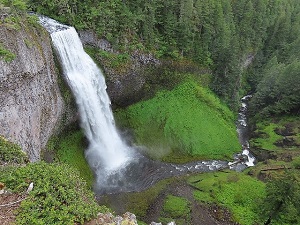 After cleaning up any species needed from the valley lowlands, we'll head up and over the Cascades, traversing Oregon's highest mountain chain. Salt Creek Falls is Oregon's only known nesting site for Black Swift; we have only a remote chance at this elusive species, but the jaw-dropping scenery is guaranteed.
After cleaning up any species needed from the valley lowlands, we'll head up and over the Cascades, traversing Oregon's highest mountain chain. Salt Creek Falls is Oregon's only known nesting site for Black Swift; we have only a remote chance at this elusive species, but the jaw-dropping scenery is guaranteed.
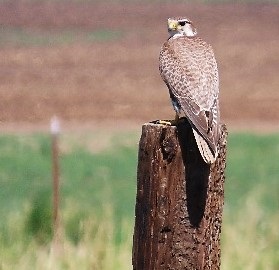 After passing through several elevational life zones and examining an imposing ancient lava rock flow, we'll enter Oregon's high desert, the vast arid region in the rain shadow of the Cascades. We'll search for Prairie Falcon, Canyon Wren, Rock Wren, Say's Phoebe, and White-throated Swift at the striking formation known as Fort Rock, then hope for Pinyon Jay, White-headed Woodpecker, Gray Flycatcher, Clark's Nutcracker, and Western and Mountain Bluebird at Cabin Lake. We'll end the day at the lovely Summer Lake Wildlife Area, where we'll stay two nights at a lodge perfectly situated for birding. After a hearty country dinner at the lodge, we can search for night birds like Common Poorwill, Barn Owl, and Great Horned Owl, and might even take a stab at trying to hear Yellow Rail, an enigmatic and highly localized species that should just be arriving. Night in Summer Lake.
After passing through several elevational life zones and examining an imposing ancient lava rock flow, we'll enter Oregon's high desert, the vast arid region in the rain shadow of the Cascades. We'll search for Prairie Falcon, Canyon Wren, Rock Wren, Say's Phoebe, and White-throated Swift at the striking formation known as Fort Rock, then hope for Pinyon Jay, White-headed Woodpecker, Gray Flycatcher, Clark's Nutcracker, and Western and Mountain Bluebird at Cabin Lake. We'll end the day at the lovely Summer Lake Wildlife Area, where we'll stay two nights at a lodge perfectly situated for birding. After a hearty country dinner at the lodge, we can search for night birds like Common Poorwill, Barn Owl, and Great Horned Owl, and might even take a stab at trying to hear Yellow Rail, an enigmatic and highly localized species that should just be arriving. Night in Summer Lake.
Day 6: Summer Lake
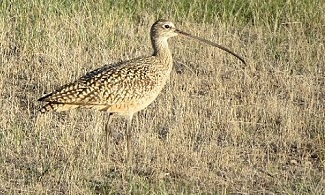 We'll start the day birding the upland rim that overlooks Summer Lake, an alkali lake basin of the high desert, where wildfires have created a dynamic patchwork of forest and burned areas. Here we'll hope for an interesting mix of species including Lewis's Woodpecker, Cassin's Finch, Williamson's Sapsucker, Mountain Quail, Blue-gray Gnatcatcher, and more. Then through much of the day we'll take our time driving the 10-mile loop through the Summer Lake Wildlife area, a bonanza of pools, ponds, marshes, mudflats, and alkali flats, looking for Snowy Plover, Long-billed Curlew, American Avocets, Black-necked Stilts, Western and Clark's Grebes, and more. Summer Lake is a favorite spot among Oregon birders, and it rarely disappoints. For those in the group eager for night birding, we can have an optional evening to search locally for (night birds) owls, poorwills, and rails. Night in Summer Lake.
We'll start the day birding the upland rim that overlooks Summer Lake, an alkali lake basin of the high desert, where wildfires have created a dynamic patchwork of forest and burned areas. Here we'll hope for an interesting mix of species including Lewis's Woodpecker, Cassin's Finch, Williamson's Sapsucker, Mountain Quail, Blue-gray Gnatcatcher, and more. Then through much of the day we'll take our time driving the 10-mile loop through the Summer Lake Wildlife area, a bonanza of pools, ponds, marshes, mudflats, and alkali flats, looking for Snowy Plover, Long-billed Curlew, American Avocets, Black-necked Stilts, Western and Clark's Grebes, and more. Summer Lake is a favorite spot among Oregon birders, and it rarely disappoints. For those in the group eager for night birding, we can have an optional evening to search locally for (night birds) owls, poorwills, and rails. Night in Summer Lake.
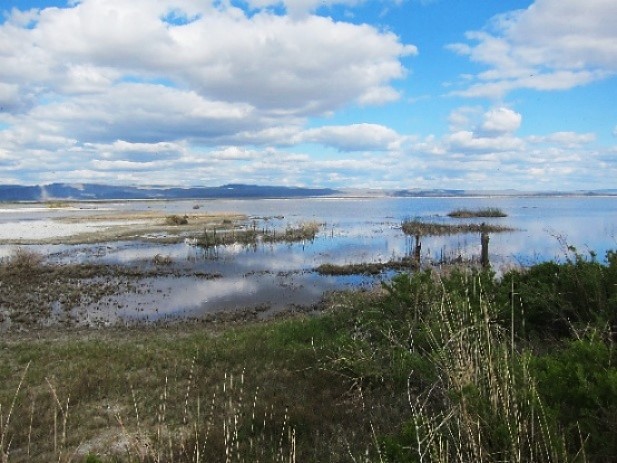
Day 7: Summer Lake to Malheur
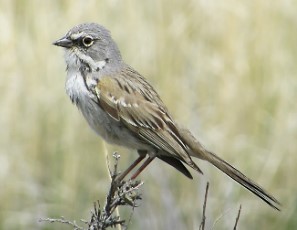 After a bit of breakfast-time birding around the lodge, we'll hit the road, traversing a broad region of arid high desert dominated by sagebrush — the so-called Sagebrush Sea so iconic in the Great Basin West hoping for birds like Golden Eagle, Black-billed Magpie, and Chukar along the way, as well as Black-throated, Brewer's, Vesper, Lark, and Sagebrush Sparrows. We'll look for Pronghorn antelope and make stops at wetland oases as we approach the famed Malheur National Wildlife Refuge, a mecca for birders from around the Pacific Northwest. Wetland species such as Black Tern, White-faced Ibis, Eared Grebe, and nesting waterfowl will mix with land birds such as Sage Thrasher, Sagebrush Sparrow, Western Kingbird, Western Meadowlark, and California Quail. Our destination and base for the next two nights, the Hotel Diamond, is a rustic and charming ranch-turned-lodge nestled within a grove of cottonwoods amid a landscape of dry hillsides and wet meadows. Night in Malheur.
After a bit of breakfast-time birding around the lodge, we'll hit the road, traversing a broad region of arid high desert dominated by sagebrush — the so-called Sagebrush Sea so iconic in the Great Basin West hoping for birds like Golden Eagle, Black-billed Magpie, and Chukar along the way, as well as Black-throated, Brewer's, Vesper, Lark, and Sagebrush Sparrows. We'll look for Pronghorn antelope and make stops at wetland oases as we approach the famed Malheur National Wildlife Refuge, a mecca for birders from around the Pacific Northwest. Wetland species such as Black Tern, White-faced Ibis, Eared Grebe, and nesting waterfowl will mix with land birds such as Sage Thrasher, Sagebrush Sparrow, Western Kingbird, Western Meadowlark, and California Quail. Our destination and base for the next two nights, the Hotel Diamond, is a rustic and charming ranch-turned-lodge nestled within a grove of cottonwoods amid a landscape of dry hillsides and wet meadows. Night in Malheur.

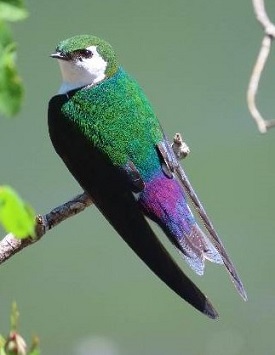 Day 8: Malheur NWR–south
Day 8: Malheur NWR–south
Waking up to Bullock's Orioles in the cottonwoods and Bobolinks in the fields, we'll spend the day exploring the southern portion of Malheur NWR. Yellow-headed Blackbirds will "serenade" us with their raucous songs, Violet-green Swallows will entertain us with their aerial antics, and we'll look for Trumpeter Swan, Wilson's Phalarope, and other wetland birds as we head toward Page Springs Campground, where Yellow-breasted Chats in riparian brush meet Black-throated Gray Warblers in juniper hillsides, and Lazuli Buntings may be found.
After visiting the remote town of Frenchglen ("Social distancing since 1872"), we'll loop back north and explore the volcanic scenery of Diamond Craters and visit a unique historic barn beside a seasonal lake. After a hearty ranch dinner at the lodge, those interested may take a slow night drive to hear calling Soras and, if we're lucky, Long-eared Owl. Night in Malheur.
Day 9: Malheur NWR–north
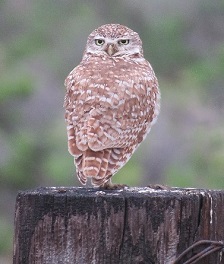 Today we'll explore the northern portion of Malheur NWR, including the refuge headquarters. "Headquarters," as it is affectionately known, has held a special place in birders' hearts for decades. Locals flock here in late spring searching for vagrant bird species from eastern North America, and we may come across a few ourselves as we enjoy the typical western fauna. You never know what migrants and vagrants might be lurking in the trees and bushes here, while American White Pelicans and Franklin's Gulls fly in the distance, Sandhill Cranes stand at attention in the fields and marshes, Black-chinned Hummingbirds visit the feeders, and Belding's Ground Squirrels run around your feet.
Today we'll explore the northern portion of Malheur NWR, including the refuge headquarters. "Headquarters," as it is affectionately known, has held a special place in birders' hearts for decades. Locals flock here in late spring searching for vagrant bird species from eastern North America, and we may come across a few ourselves as we enjoy the typical western fauna. You never know what migrants and vagrants might be lurking in the trees and bushes here, while American White Pelicans and Franklin's Gulls fly in the distance, Sandhill Cranes stand at attention in the fields and marshes, Black-chinned Hummingbirds visit the feeders, and Belding's Ground Squirrels run around your feet.
In the afternoon we'll check more oases and hope for Burrowing Owl, Ferruginous Hawk, Swainson's Hawk, and other species, as we grab an early dinner and head west on a long drive through the Sagebrush Sea back toward the Cascades. Night in Bend or Sisters.
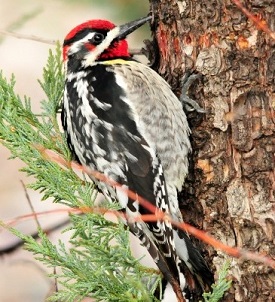 Day 10: In the ponderosa pines
Day 10: In the ponderosa pines
We’ll spend today exploring the scenic ponderosa pine woodlands around the charming town of Sisters, on the lower east slope of the Cascades. Pygmy Nuthatch, Dusky Flycatcher, Calliope Hummingbird, Mountain Chickadee, Townsend's Solitaire, Green-tailed Towhee, Pinyon Jay, and White-headed Woodpecker are a few of the specialty birds of this area. The region is also known as Oregon's "woodpecker wonderland," with 10 or 11 species possible. We'll make a special effort for any known individuals of Black-backed Woodpecker (not easy), American Three-toed Woodpecker (rare), and Red-naped Sapsucker (difficult now that Red-breasted Sapsuckers are spreading east and hybridizing with them!). Night in Sisters or Redmond.
Day 11: Gorges, peaks, rivers, and waterfalls
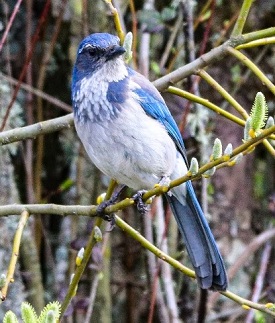 Our final day takes us all the way back to Portland, punctuated by several stops in varied habitats. We'll enjoy astonishing scenery along the Crooked River and aim for good views of White-throated Swift and any arid-land species we still need, before searching out Tricolored Blackbird, an elusive and highly localized species whose colony sites may vary from year to year.
Our final day takes us all the way back to Portland, punctuated by several stops in varied habitats. We'll enjoy astonishing scenery along the Crooked River and aim for good views of White-throated Swift and any arid-land species we still need, before searching out Tricolored Blackbird, an elusive and highly localized species whose colony sites may vary from year to year.
We'll then transition into mountain scenery where breathtaking views of Mount Hood, Oregon's highest mountain, are possible from the impressive Timberline Lodge. Aptly named, this lodge is indeed at timberline; professional skiers train here (and for movie buffs, parts of the film "The Shining" were filmed here). We'll then drop down to the Columbia Gorge, to take in the views of the "gorge-ous" cliffs along the Columbia River (North America's fourth-largest river by volume) that wowed Lewis and Clark on their historic journey. If conditions are right, we can watch the daring acrobatics of kite surfers over dinner from a brew pub in Hood River. An evening visit to Oregon's highest waterfall, on our way back to Portland will complete our tour. Night in Portland.
Day 12: Portland – Depart for Home
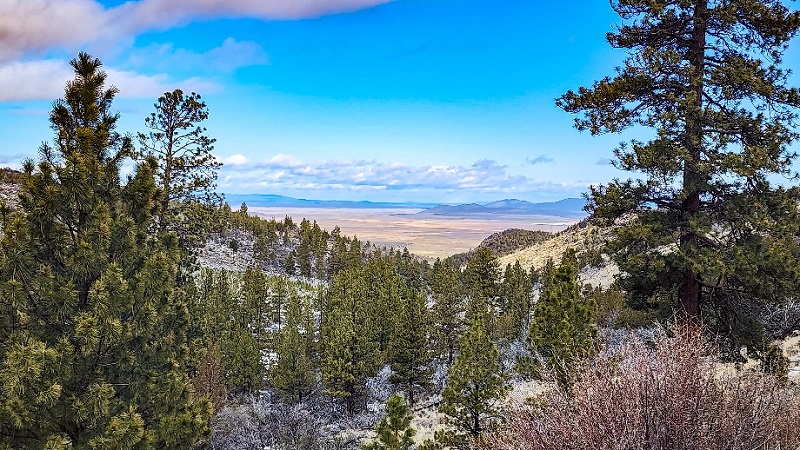
Leaders: Frank Gallo & Jay Withgott
Frank Gallo
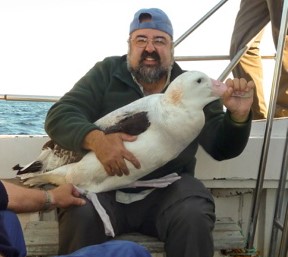 Frank is a leading expert on where to find birds in Connecticut. Through his birding tours, lectures, and classes he has inspired countless birders to discover and appreciate the region’s rich bird life. Before joining the Sunrise Birding team, Frank worked for the Connecticut Audubon Society for twelve years, as the Senior Naturalist and Director of the Connecticut Audubon Society Coastal Center at Milford Point. Previously, he served at the New Canaan Nature Center as Director of Public Programs and Director of Eco-Travel and Field Studies, and before that with the New Haven Parks Department. Currently, he is a member of the Connecticut Avian Rare Records Committee, is federally licensed as a master bird bander, and is a past president of the New Haven Bird Club. Frank has recently completed work on his bird finding guide, Birding in Connecticut, published in May 2018. In 2003 he received the Connecticut Outdoor Environmental Education Association's award as Environmental Educator of the Year. Frank leads local bird walks for Sunrise Birding and will be developing weekend trips as well as domestic and international birding tours.
Frank is a leading expert on where to find birds in Connecticut. Through his birding tours, lectures, and classes he has inspired countless birders to discover and appreciate the region’s rich bird life. Before joining the Sunrise Birding team, Frank worked for the Connecticut Audubon Society for twelve years, as the Senior Naturalist and Director of the Connecticut Audubon Society Coastal Center at Milford Point. Previously, he served at the New Canaan Nature Center as Director of Public Programs and Director of Eco-Travel and Field Studies, and before that with the New Haven Parks Department. Currently, he is a member of the Connecticut Avian Rare Records Committee, is federally licensed as a master bird bander, and is a past president of the New Haven Bird Club. Frank has recently completed work on his bird finding guide, Birding in Connecticut, published in May 2018. In 2003 he received the Connecticut Outdoor Environmental Education Association's award as Environmental Educator of the Year. Frank leads local bird walks for Sunrise Birding and will be developing weekend trips as well as domestic and international birding tours.
Jay Withgott
 Jay Withgott is a lifelong birder and has spent more than 20 years exploring the varied habitats of his adopted home state of Oregon. An eBird reviewer and longtime member of the Oregon Bird Records Committee, Jay is currently editor of Oregon Birds, the state's journal of birding and field ornithology. He has helped lead many birdathon trips across Oregon and was part of Oregon's record-setting big day team. His interests extend beyond birds to dragonflies, butterflies, herps, marine invertebrates, and more. He has served on the board of Western Field Ornithologists and the Bird Alliance of Oregon (formerly Portland Audubon) and now serves on the board of the Xerces Society for Invertebrate Conservation. In his day job, he is an author of leading college textbooks in environmental science. He lives in Portland with his wife Susan, a biology professor at Portland State University.
Jay Withgott is a lifelong birder and has spent more than 20 years exploring the varied habitats of his adopted home state of Oregon. An eBird reviewer and longtime member of the Oregon Bird Records Committee, Jay is currently editor of Oregon Birds, the state's journal of birding and field ornithology. He has helped lead many birdathon trips across Oregon and was part of Oregon's record-setting big day team. His interests extend beyond birds to dragonflies, butterflies, herps, marine invertebrates, and more. He has served on the board of Western Field Ornithologists and the Bird Alliance of Oregon (formerly Portland Audubon) and now serves on the board of the Xerces Society for Invertebrate Conservation. In his day job, he is an author of leading college textbooks in environmental science. He lives in Portland with his wife Susan, a biology professor at Portland State University.
Trip Cost & Travel Planning> Registration Form> Tour Registration, Terms, Cancellation Policies>
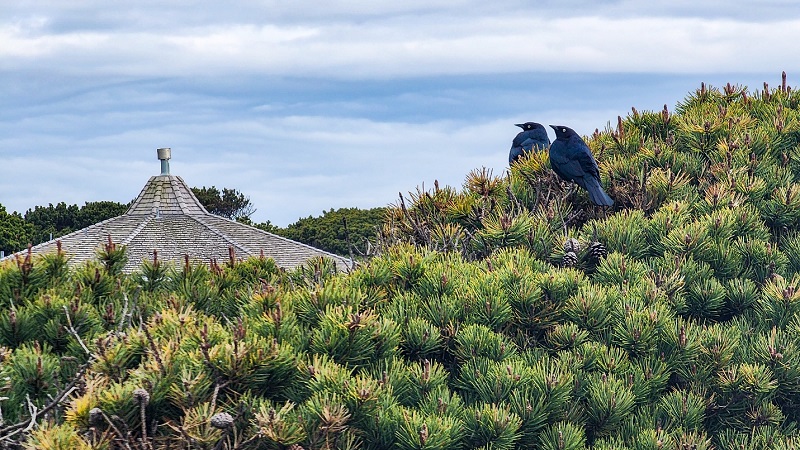
PHOTO: Brewer's Blackbirds by Frank Gallo
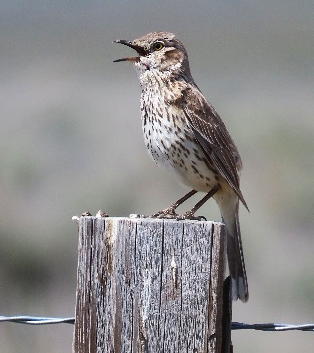 OREGON OREGONMay 29 - June 9, 2026 Registration Form> Contact [email protected] to reserve your space! TOUR PRICE: $4545 per person based on double occupancy and a group of 8 pax from Portland, Oregon (Airport code: PDX) . With less than 8 pax, a small group supplement will be charged. Single supplement: $1199 per person, subject to availability. Deposit: $1000.00 per person per tour. Note: Tour deposits can be paid by credit card via PayPal. Use this link to make your credit card payment. Please advise [email protected] when you have made payment. Included in cost: Accommodation in double / twin en suite rooms with full board, group transportation on arrival, detailed pre-trip materials and checklists, services of local guide and tour leaders throughout the trip. Not included: Flights to and from Portland, Oregon, luggage charges, insurance, drinks, tips, and items of a personal nature. Also, any and all costs arising from pandemic or Covid-19 related issues are not included in the tour cost and are the sole responsibility of the traveler. These include, among others, the costs of Covid treatment, hospitalization, medical fees, transport, meals and accommodation in case of illness or quarantine, and the costs of any Covid tests needed before, during and after the tour.
Check or bank transfer are preferred but credit card payments are possible (surcharges of up to 5% are added depending on amount to cover credit card company fees). Final payment is due January 29, 2026.
**Please
note: Tour prices
are based on quoted
costs from ground
operators (in
their local currency),
estimated fuel
costs, and the
rate of exchange
the time of itinerary
publication. The
erratic nature
to global financial
markets makes
it difficult to
predict changes
in costs and foreign
currency exchange
rates over the
long term. Since
tours are priced
well in advance
of the actual
operation of the
tour, tour costs,
fuel costs and
exchange rates
can change, sometimes
drastically. Depending
on the extent
of such changes,
it may be necessary
to implement a
surcharge on this
tour. If a surcharge
is necessary,
every effort will
be made to minimize
the amount. Cancellations
and Refunds:
TRIP INSURANCE: PLEASE NOTE:
|
Questions? Contact Gina Nichol at gina@sunrisebirding.com Photos by Jay Withgott unless noted.